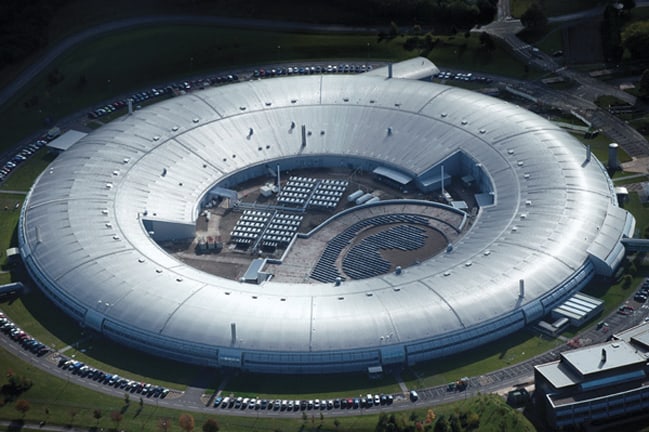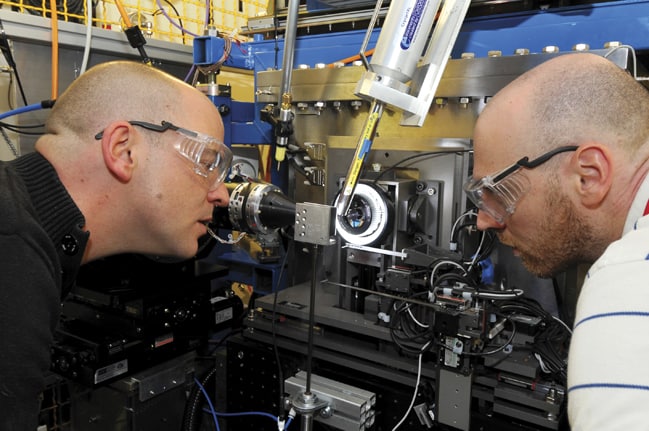A recent online poll asked readers for views on the UK contribution to large science projects around Europe. This question taps in to a key issue in modern science: what are the core benefits of collaboration? Why is working together, both internationally and across industry and academia, perceived as so significant to scientific progress?
As chief executive officer of one of the most advanced scientific facilities in the world – the UK’s national synchrotron, Diamond Light Source – I see constant examples of how collaborations support our pioneering capabilities and keep the UK at the forefront of scientific research.

Diamond produces light 10 billion times brighter than the Sun, which scientists can then use to study the atomic and molecular nature of matter; this is useful for designing new medicines, engineering and technology. An internationally recognised facility, Diamond attracts some of the world’s best scientists, engineers and industry leaders, and we currently have 42 nationalities represented on staff.
However, we could not have achieved our success without significant support from the government, the UK taxpayer, the Wellcome Trust, universities, industry, science foundations, the global synchrotron community and the engineers who come from all over the world to use Diamond. Scientists are tackling increasingly complex problems, many of which require a combination of techniques and access to experimental equipment that one institute or company cannot afford on their own.
”Scientists are tackling increasingly complex problems, many of which require a combination of techniques and access to experimental equipment that one institute or company cannot afford on their own. Collaboration across disciplines and countries enhances the capabilities of everyone involved and improves scientific output overall
Collaboration across disciplines and countries enhances the capabilities of everyone involved and improves scientific output overall. In our case, it helps us deliver a broad range of impactful science, including drug therapies and vaccines, smart materials with novel properties, cutting-edge technology and more. We help to grow our facility in partnership with industry and academia, and scientific research at Diamond brings benefits to all of society.
Diamond became operational in 2007 and it has expanded rapidly; in the last year alone, we delivered almost 8,000 shifts in which scientists came to use the powerful synchrotron light. About a quarter of these shifts involved industry, with companies either paying for access or being involved in industry-academic collaborations, which are free of charge, providing the results are published in the public domain.
Industrial involvement plays a vital role at Diamond and our industrial base is becoming broader. We have a dedicated Industrial Liaison Team to help these users get the most out of their experiments. The team supports users in experiment design and planning through to final results and reporting. So far, 85 companies have paid to use Diamond.

Diamond serves the needs of industry and we hold events throughout the year to showcase outstanding science and highlight its relevance to industry. Diamond is a key component of the R&D chain in the pharmaceutical industry; indeed, we support the work of many major multinationals in the UK.
But it’s a two-way street; industry contributes significantly to the development of our synchrotron’s scientific agenda. Commercial companies have driven huge improvements in the pace and scale of analysis that we carry out, delivering huge benefits to all users.
For us, partnerships with academia, industry and other facilities are critical in ensuring the increasing challenges of ‘big data’ are met. They enable the ‘zeros’ and ‘ones’ produced by our detectors to produce new scientific insights. This is why we are so committed to advancing our capabilities.
No facility can afford to be an island, entire of itself. By working alongside our users and the international community, we keep ahead of the curve. Collaboration drives modern scientific progress. There’s no doubt in my mind that we, the scientific community, are far stronger together than we are alone.
Two recent projects with industry include:
- Drug characterisation with GlaxoSmithKline (GSK): GSK is using this national facility as part of its commitment to using the best science to answer important structural questions.
“Without the use of I11, we would not have been able to reach these detection limits that have led to greater understanding and control over the solvate material, thereby allowing us to have confidence in the reproducibility of our manufacturing process.” Dr Matthew Johnson, GlaxoSmithKline
- Rolls-Royce – strain in fan blades: Rolls-Royce needed to find a non-destructive strain measurement for a Trent Engine 1000 fan blade. The diffraction measurements at Diamond enabled Rolls-Royce to look effectively inside the fan blade and measure through-wall residual stresses. The measurements were shown to be less time consuming and more accurate than lab-based methods, and the non-destructive method allows further use of the components.
“The information we can now obtain from I12 will help us develop new processes, improve material properties and reduce cost. This detailed, in-situ examination of advanced engineering materials will enhance the durability of aerospace components.” Prof David Rugg, Rolls-Royce




Red Bull makes hydrogen fuel cell play with AVL
Formula 1 is an anachronistic anomaly where its only cutting edge is in engine development. The rules prohibit any real innovation and there would be...